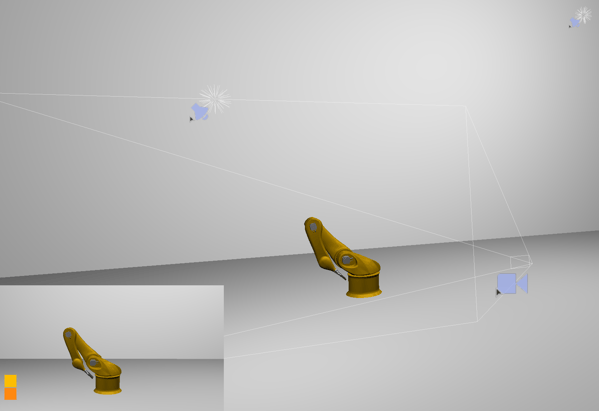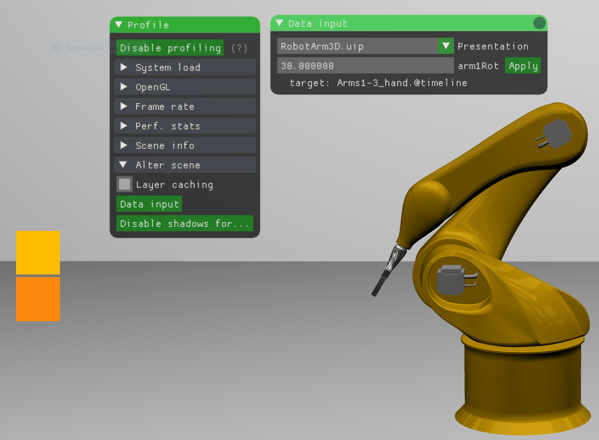Qt 3D Studio 2.1 Released
October 01, 2018 by Sami Makkonen | Comments
We are happy to announce that Qt 3D Studio 2.1 has been released. Qt 3D Studio is a design tool for creating 3D user interfaces and adding 3D content into Qt based applications. With Qt 3D Studio you can easily define the 3D content look & feel, animations and user interface states. Please refer to earlier blog posts and documentation for more details on Qt 3D Studio.
Editor
Sub-Presentations is a feature which allows embedding an another Studio presentation or a QML file in a Studio presentation. This enables for example dividing the design work into smaller projects and making re-usable components. Managing the Sub-Presentations and adding them into views is now easier with the 2.1 release. Project browser shows all the Qt Quick files (.qml) and Qt 3D Studio presentations (.uip) imported to the main project and then those can be easily added to a scene layer or a texture to a an object by dragging from the project browser to the scene. Please refer to the documentation for more details. Sub-Presentations are also now visible in the scene view so that you can see the whole user interface when creating the design.
Qt 3D Studio 2.1 release also contains a new option for Scene preview when you are working with different camera views (perspective, top etc.) which super handy when aligning objects in the scene.
Runtime
On the runtime side the main focus has been on performance and stability improvements. We have also been writing a new API that enables replacing the old runtime in the Qt 3D Studio Editor. In the future the new API will also enables dynamic content creation from the application side. Stay tuned.
Profiling view has gained some additional data and the possibility for e.g. changing the data input values.
As you may know we introduced support for compressed textures in Qt Quick applications in Qt 5.11 and we are happy to announce that this support has been also added to the Qt 3D Studio runtime. So if you are targeting to a device that supports ETC2 or ASTC Compressed textures you can improve the loading time and save memory by compressing the textures. Of course this is just the first step and we are introducing the asset compression management in the Editor side in the future versions of Qt 3D Studio.
Getting started
Qt 3D Studio 2.1 is available through Qt online installer under the Tools section. We also provide standalone offline installers which contain all you need to start designing Qt 3D Studio User Interfaces. Online installer also contains pre-build runtime for Qt 5.11 which is needed for developing Qt applications using Qt 3D Studio UI. Qt online installer and offline installers can be obtained from Qt Download page and commercial license holders can find the packages from Qt Account. Binary packages are are available for Windows and Mac. Instructions for building the editor & runtime to Linux please refer to the README file. Please also note that Qt 3D Studio runtime uses Qt 3D module for rendering which means that Qt 3D Studio 2.1 requires Qt 5.11.2.
Some example projects can be found under examples folder in the installation directory. Additional examples and demo applications can be found from https://git.qt.io/public-demos/qt3dstudio repository. If you encounter issues with using Qt 3D Studio or you would like to suggest new feature, please use Qt3D Studio project in the https://bugreports.qt.io
Blog Topics:
Comments
Subscribe to our newsletter
Subscribe Newsletter
Try Qt 6.7 Now!
Download the latest release here: www.qt.io/download.
Qt 6.7 focuses on the expansion of supported platforms and industry standards. This makes code written with Qt more sustainable and brings more value in Qt as a long-term investment.
We're Hiring
Check out all our open positions here and follow us on Instagram to see what it's like to be #QtPeople.





